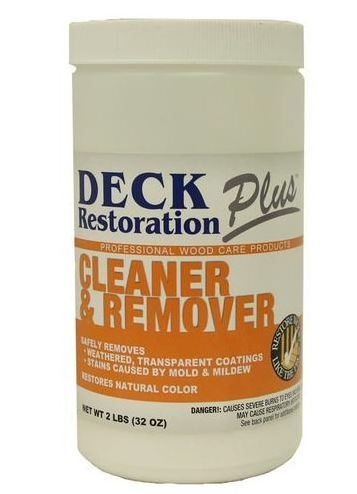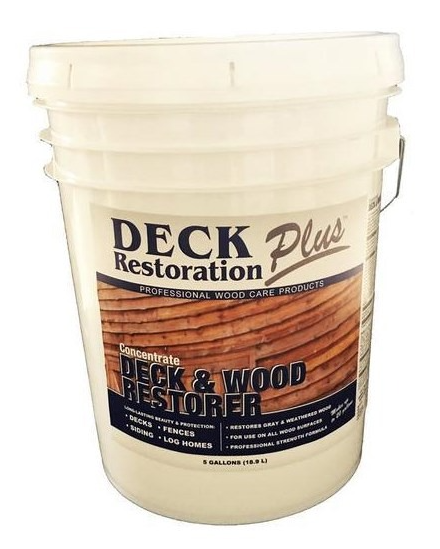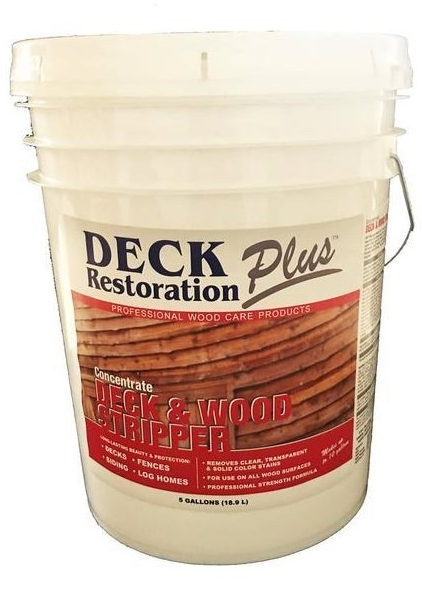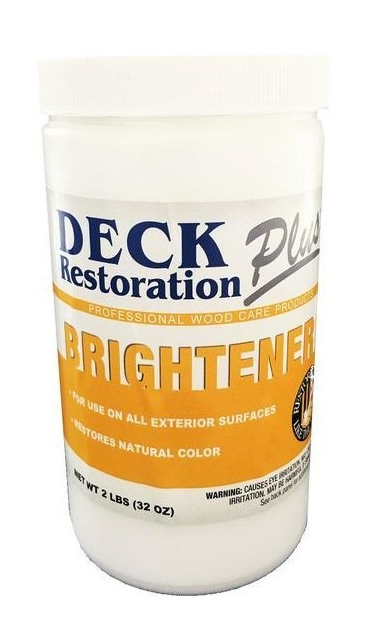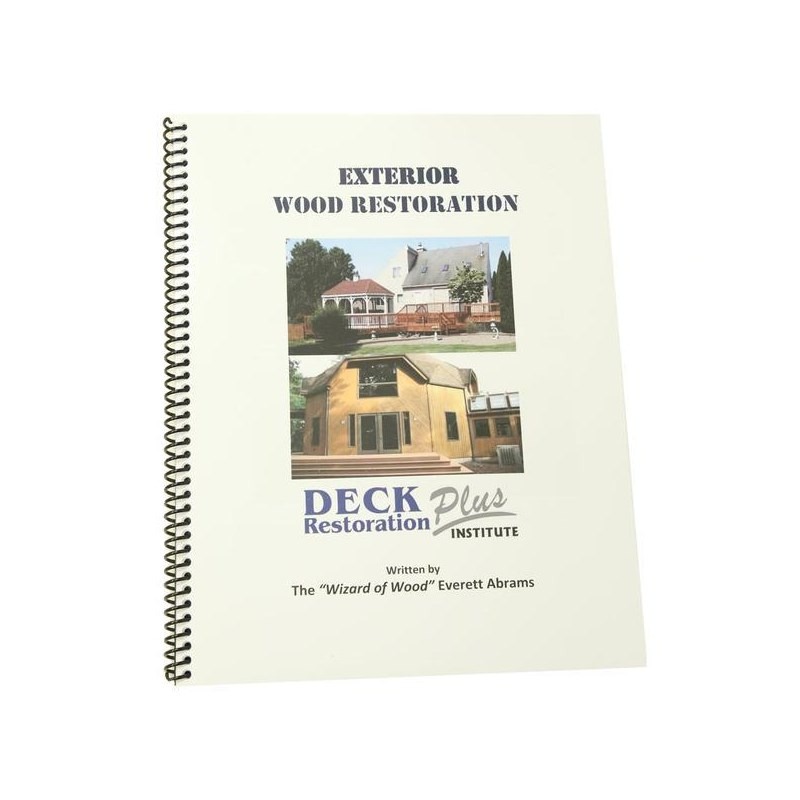What Is the Right Way to Clean and Restore Wood Decks and Fences?
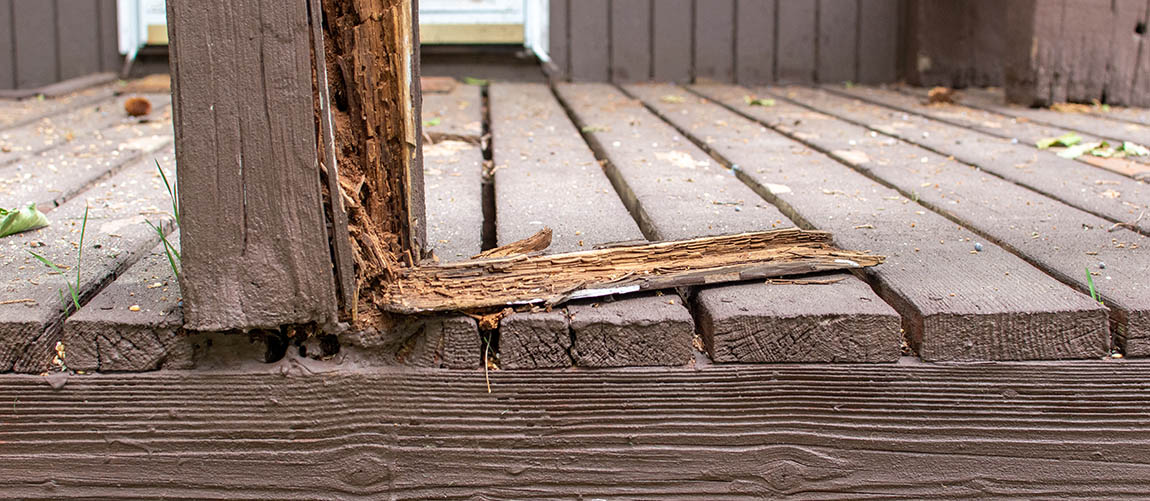
What's the Difference between Wood Cleaning and Wood Restoration?
When talking with your customer, you need to find out what they are really wanting. Do they just want the wood cleaned or the wood restored? Let's look at the difference.
Wood cleaning means simply that you are washing the wood, removing dirt and organic growth. If this all the customer wants to be done, it can be completed using a pressure washer or soft washing system, like our convenient and efficeint ProTool Clever Spraying System. However, you need to discuss with the customer that the process may remove some of the prior coatings and even depreciate the wood. Cleaning will not make the wood look the same as it did when the wood was new or originally stained or sealed.
Wood restoration means actually restoring the wood so that it's as close as possible to its original state. This may mean stripping previous stains or sealers from the surface.
The price difference should be significant. Restoration is a much bigger project.
Why Bleach Is Not the Best Option for Cleaning Wood
Many in the soft washing industry are asked to clean their clients' wood decks, fences, and other exterior wooden surfaces. And many are doing it wrong.
While sodium hypochlorite (bleach) is the go-to product in most soft-washing jobs, it is typically not the best choice for cleaning wood. Chlorine bleach is used to remove color and to kill organic growth, like mold and mildew. If misused on wood – and it often is – bleach will damage and/or destroy the wood. That doesn’t mean it can’t be used, but it must be done correctly. Here’s why:
- Sodium hypochlorite works well on non-porous surfaces. This is why it’s the product of choice for removing organic growth from vinyl siding and roofs. Wood, however, is porous.
- Bleach goes to work on what it hits first. If there’s organic growth, the bleach will attack the growth, but it won’t actually get to the wood, so your wood is not going to be “cleaned” evenly.
- Sodium hypochlorite can damage the wood. Using too hot of a solution, which is what often happens, bleaches the tannins from the wood and dries it out. At this point, staining is about the only option, and the stains won’t look as good as they would have had the wood not been bleached.
- Bleach can void the warranty. Composite decks and certain stains, such as those from Sherwin Williams, will not back their warranty if cleaned with sodium hypochlorite.
- Bleach can destroy wood's lignin. This is the glue that holds wood together. If left on wood too long, or if too strong of a concentration is used, the solution can damage the lignin, resulting in fuzzing, further degradation of the wood, and ultimately poor stain adhesion and failure.
- Bleach can eat away and rust nails and screws in your wood.
That's not to say bleach does not have its place in wood cleaning. But that place should only be to kill organic growth on the surface of wood, and only using household mix strength (i.e., 5-7% SH).
What are the Best Products for Cleaning and Restoring Wood?
Everett Abrams, “The Wizard of Wood,” is the owner and founder of Deck Restoration Plus (DR) products recommends a two-step cleaning process that starts with using an alkaline-based product, such as DRP's Cleaner or Restorer, followed by a brightener.
Deck Restoration Plus (DRP) Cleaner
Designed and used by the "Wizard of Wood" himself, Deck Restoration Plus Cleaner is designed to clean and prep new or grayed wood, removing mold and mildew to help restore the wood back to its natural color.
- Unique, professional formula
- Safe and effective on all exterior wood decks, siding, lattice, fencing, and all other natural wood structures.
- Safe for us on composite decking.
- Environmentally friendly
- 100% biodegradable
- Does not contain any chlorine compounds or hypochlorite bleach
Deck Restoration Plus Cleaner & Remover
This formula is designed for those more challenging wood surfaces. DRP's Cleaner and Remover makes cleaning and removing coatings a one-step process.
- Provides superior cleaning
- Removes many coatings (weathered and transparent)
- Safe and effective on all exterior wood decks, siding, lattice, fencing, and all other natural wood structures.
- Safe on composite decking.
- Environmentally safe
- 100% biodegradable.
Deck Restoration Plus: Deck & Wood Restorer
This amazing product is a stronger cleaner that removes organic growth as well as lightly strips and restores wood all in one step. This is the go-to project for wood-restoration professionals.
- Concentrated sodium metasilicate-based cleaner
- Water-Based
- Safe for use on pressure-treated pine, oak, cedar, redwood, and other common wood surfaces
- Restores weathered wood to its natural color
- Removes stains caused by mold, mildew, and mosss.
- Contains no sodium hypochlorite (bleach)
- Undiluted gallon covers approximately 100-150 Square Feet.
- Overall coverage varies depending on dilution rate and substrate
- Concentrate makes up to 20 gallons
Deck Restoration Plus (DRP) Deck & Wood Stripper
DRP’s Deck and Wood Stripper is designed for those wood surfaces that have a coating or stain that needs to be removed. The to safely remove all types of wood stains and coatings, including oil-based coating, water-based coatings, and hybrids. The only difference is the mix ratio and dwell time.
To use:
- Pre-wet the wood. This keeps the product closer to the surface so it’s more effective and also helps prevent damaging the wood.
- Apply the stripper. Mix ratios vary from 3:1 for hard-to-remove stains/coating to 7:1 for those that are easier to remove.
- Allow to dwell as long as needed, typically between 20 to 40 minutes. If you’re working in cold weather, it may take a little longer.
- Do a “scuff” test. Either using a nylon brush or the heel of your boot, rub it on the surface and see if the coating is coming off. If so, then it’s time to rinse.
- Rinse thoroughly using a low-pressure rinse, keeping your nozzle 6 to 12 inches away from the wood. The stripper has a surfactant that lifts the coating up, so you just need to gently rinse. Make sure you rinse until all the product is off.
Note: The wood will likely appear dark, possibly even black. Don’t worry. It will brighten back up to its beautiful original color once you apply the DRP Brightener in the next step.
Why Should I Use a Wood Brightener after Cleaning a Deck or Fence?
Wood brighteners serve 4 purposes:
1. Wood brighteners neutralize the surfaces. The detergents used to clean wood are high alkaline, leaving the wood's pH out of balance.
2. Wood brighteners neutralize and remove iron and metal stains in the wood.
3. The acid in the wood brightener opens up the wood's pores, which allows the coating to adhere better.
4. Wood brighteners lighten and brighten the wood, making it more aesthetically pleasing.
After you clean the wood, we recommend going back and applying a brightener, such as DRP’s Deck Brightener, which uses oxalic acid along with a proprietary blend of other materials. Oxalic acid is sometimes referred to as “wood bleach” because of how it reacts with the tannins in the wood, really bringing out the natural color. DRP’s Deck Brightener will also remove metal stains, such as nail bleeds. If left untreated, these are really noticeable, especially when you apply a stain.
DRP Wood and Deck Brightener
Apply DRP's Wood and Deck Brightener to wet wood surfaces and you'll see the color come back before your eyes to like-new condition!
- Unique professional formula
- Safe and effective on all exterior wood decks, siding, lattice, fencing, furniture, and other wooden structures
- Safe for use on composite decking
- Environmentally safe
- 100% biodegradable
And undiluted gallon covers approximately 200-250 square feet. Overall coverage varies depending on dilution rate and substrate concentrate makes up to 20 gallons.
**NOTE** Since there is a wide variation in the quality and variety of wood surfaces, test on an inconspicuous area and allow to dry before general use
Four Basic Recommendations for Cleaning and Restoring Exterior Wood
1. Apply these products to wet surfaces only.Pre-wetting wood surfaces is a standard and the first step in exterior wood restoration (unless otherwise directed by a manufacturer). Water can act as a barrier so that when the wood is soaked, the cleaner will work closer to the surface, therefore becoming more effective at removing surface mold and mildew. This also keeps these chemicals from soaking deep into the wood and becoming harder to rinse out.
2. Apply the cleaner, stripper, brightener, or any other product to the wood surfaces and allow it to clean, remove an old coating, brighten wood, etc., so that we have great results.
Applying the right product for the job and using the proper dwell times, we can restore wood surfaces with the least amount of pressure possible to get the job done. In other words, blasting wood with water and relying on pressurized water only is not wood restoration.
3. Rinse wood surfaces thoroughly.Any time a chemical is used, it should be rinsed thoroughly so that no chemical residue is left on the surfaces that may cause damage, dry out the wood, form salt residue, or even cause a failed coating. “The rule of thumb in our industry is to rinse, rinse, and rinse again!”
4. Apply a coating that will help preserve and extend the life of the wood.
This should happen regardless if the contractor or homeowner performs this work.
Learn Wood Restoration from the "Wizard" Himself!
You can learn more about cedar shake restoration, along with all things wood, from the "Wizard of Wood" himself in the Deck Restoration Plus (DRP) Exterior Wood Restoration Manual, written by Everett Abrams.
Contents include:
- Species of Wood
- Equipment, Supplies, and Maintenance
- Chemicals
- Identifying Issues & Troubleshooting
- The restoration process
- Coatings
- Pricing/Estimating
- Marketing and Branding
- Safety



